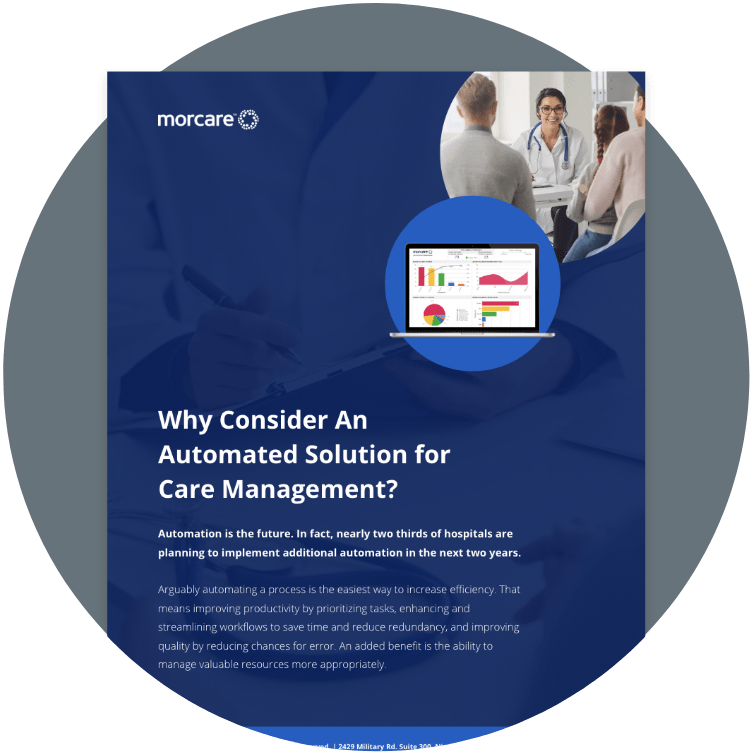The concept of the continuum of care in healthcare settings refers to the all-encompassing delivery of health services from admittance to full discharge. This comprehensive approach is crucial for achieving positive patient outcomes, enhancing patient satisfaction, reducing readmissions, and lowering overall healthcare costs. However, maintaining this continuous, seamless flow of care can pose significant challenges, particularly in rural hospital settings where capacity and resources may be strained.
Rural hospitals, owing to their geographical location and resource constraints, face a unique set of challenges. These range from limited infrastructure and high staff turnover to challenges in implementing modern healthcare solutions such as electronic health records and other innovative software.
In this context, ensuring a robust continuum of care becomes a challenging task for rural hospital organizations and staff. Today, we’ll be covering some key insights that you can put into practice that can help you maintain a greater continuum of care even when it may seem out of reach at a first glance.
Understanding the Role of Outpatient Care in the Continuum of Care
Excellent outpatient care, defined as the care given to patients who do not require hospitalization, is a fundamental component of the continuum of care. Without constant monitoring from doctors, nurses, and other care personnel, the patient has the responsibility to follow the treatment plan based on a doctor’s recommendations.
Quality outpatient treatment is essential for preventing unnecessary hospital readmissions and promoting overall outcomes. However, providing effective outpatient care in rural settings can be challenging due to factors such as a lack of specialized healthcare providers, long travel distances from homes to hospitals, and difficulties in maintaining patient follow-ups due to these distances.
Further, some rural areas may experience limited access to telemedicine technologies due to poor internet connectivity. This lack of virtual care options can further exacerbate the challenges of providing outpatient care, as it becomes more difficult for healthcare providers to keep track of their patients’ health status and needs outside the hospital.
Strategies for Enhancing Outpatient Care in Rural Settings
In a rural setting where it might feel like hospital staff are often involved in providing care by committee, a patient may be treated by more than one doctor as organizational bandwidth fluctuates. Keeping all involved in the treatment process informed and on the same page is not just a luxury, but a concrete necessity.
Populations served by rural hospitals are often at high risk of readmissions due to common chronic conditions in these environments, such as diabetes, COPD, hypertension, depression, and cardiovascular disease. If a hospital is too small or lacks the staffing to support large numbers of readmissions and new cases, do they have additional resources to support the strain on bandwidth?
Proactive communication is another essential aspect of the continuum of care in a rural healthcare landscape. To help facilitate this between providers and patients, using the right digital solutions can transmit this information instantly between all stakeholders.
For example, if a patient is at a high risk of readmittance or has a chronic condition that will eventually result in a high likelihood of readmittance, having the means to identify this and communicate it throughout your organization can cut down much of the time spent fact-finding and assessing the condition with each visit. Instead, everyone will have detailed information to work off of with a complete picture of the patient’s specific condition, symptoms, risk level, needs like medication allergies, and more.
Beyond flagging likely candidates for readmittance, the right software option can also be used to identify which patients will require follow-up care in an outpatient setting post-discharge. This will enable providers to fulfill the follow-up care plan and better monitor their patients either in-office or remotely.
Lastly, prior to discharge, consider using a tailored surveying strategy to gain more information and insights from your patients. They can complete the survey prior to their discharge to most effectively aid you in formulating an aftercare treatment plan if necessary.
If a patient with a chronic condition or high likelihood of readmittance is preparing for discharge, you may want to provide them with a survey that asks questions like:
- Do you live with someone who can assist you with any aftercare if needed?
- Do you live within reasonable driving distance of a pharmacy to pick up prescriptions?
- Are there any symptoms or pain that you are still experiencing? If so, please describe.
- Do you have a reliable internet connection or phone reception to participate in follow-up calls after discharge?
- Do you have a primary care provider that we can share your information with to assist in aftercare?
Though the above list is just a sample, these types of questions can paint a fuller picture of the patient’s life outside of the hospital and identify any factors that could increase their risk of readmission. With these insights in-hand, you can take a more deliberate and strategic approach to outpatient aftercare.
Beyond software, staffing support resources are another critical component. Working with a resource that can provide you with referrals to staffing service providers can also ensure that you have appropriate numbers of personnel available, especially during peak seasons and times of day.
Expanding the Continuum Beyond Your Hospital
Adopting innovative healthcare delivery models, such as care coordination, can also play a vital role in improving the continuum of care. These models can help create a seamless care experience, particularly in managing chronic conditions and improving inpatient and outpatient care transitions.
Establishing partnerships with larger healthcare institutions can also be beneficial. This can provide rural hospitals access to specialized care and resources, enhancing their capacity to provide comprehensive outpatient care services. However, it’s crucial that these partnerships are based on mutual collaboration, fostering an environment of shared learning and resource exchange.
Training and Retaining Staff in Rural Hospitals
Maintaining a skilled and stable staff is another crucial aspect of ensuring a robust continuum of care. The presence of competent, consistent, and reliable healthcare professionals can lead to better patient care and improve patient outcomes in the long run.
To retain skilled staff, rural hospitals must offer competitive salaries and benefits, coupled with professional development and advancement opportunities. If a professional likes living in your geographic area, feels fairly compensated, and also feels purposeful in their work, they are less likely to contribute to turnover. Furthermore, fostering a supportive and inclusive work environment can help in reducing staff turnover and promoting a sense of belonging among the departments.
The Role of Healthcare Policy in Improving the Continuum of Care
Healthcare policies have a profound impact on the functionality, operations, and services of all healthcare institutions, and rural hospitals are no exception. Policies can determine how resources are allocated, how staffing is managed, what types of services are offered, and how those services are delivered. Given this, healthcare policy can be instrumental in shaping and improving the continuum of care within remote healthcare settings.
A clear example of policy influence is evident in the realm of staffing. Certain states limit the authority and practice capabilities of nurse practitioners and physician assistants, thereby potentially restricting their ability to fill roles in outpatient care. Advocacy for policy changes could open up these regulations, enabling these healthcare professionals to take on broader responsibilities and, as a result, improve the continuity of care in rural hospitals.
Healthcare policies can also determine the extent of telemedicine services, which are crucial in enhancing the continuum of care, especially in outpatient environments. Policies that promote the expansion of broadband connectivity, for instance, can directly impact the ability of rural hospitals to provide telemedicine services. Additionally, policies that regulate reimbursement rates for telemedicine can impact the feasibility of these services, as higher reimbursement rates make it more financially viable for rural hospitals to offer telemedicine.
Another critical area influenced by policy is the financial sustainability of hospitals. Policies that ensure fair funding and resource allocation can help organizations maintain and expand their outpatient care services, which are vital for a robust continuum of care.
Moreover, policies can also foster collaborations and partnerships between rural and urban healthcare institutions. Encouraging policies that allow for resource sharing, joint training programs, and shared healthcare initiatives can go a great distance in bolstering the continuum of care.
Given these significant implications, healthcare leaders, particularly those in rural settings, have an important role in influencing healthcare policy. As an administrator, you have on-the-ground experience that puts you in a unique position to understand the real-world impacts of these policies and to advocate for changes that can genuinely support and improve quality of care.
Strengthen Your Continuum of Care with MorCare
At MorCare, we provide rural hospital systems with innovative, highly customizable software solutions to better support communication and data-driven decision-making with the goal of enabling your care staff to offer an enhanced continuum of care in outpatient settings. As part of our mission to support organizations like yours, we also partner with some of the industry’s leading business units to assist with staffing shortages.
To learn more and experience what you can unlock with our platform, request demo today.

